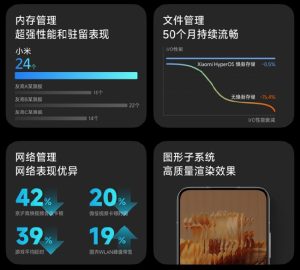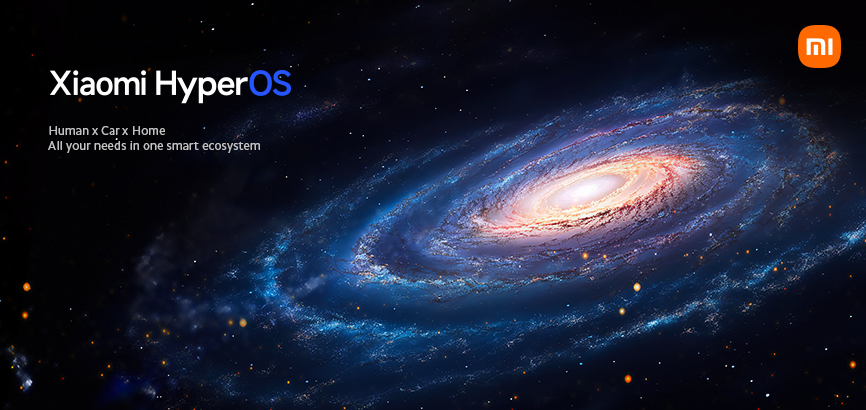
Xiaomi introduced its latest operating system, HyperOS, during the launch event for the Xiaomi 14 series in China, as previously promised. Xiaomi says it has expanded from 100 to 1.175 billion users globally in 13 years, and their product range now spans 200 categories.
In the age of IoT, Xiaomi faced challenges dealing with various device operating systems and interoperability issues. This led to the creation of Xiaomi HyperOS in 2017, with the OS aiming to unite all ecosystem devices into one integrated system for peak performance, a consistent user experience, and seamless connectivity.
Core Technology: Linux and Xiaomi Vela
Xiaomi HyperOS relies on Linux and Xiaomi’s self-developed Xiaomi Vela system, allowing it to work efficiently with various devices, regardless of RAM size. Xiaomi HyperOS is lightweight, using minimal resources compared to competitors.
Optimized Performance: Scheduling and Technical Modules
Xiaomi HyperOS excels in scheduling tasks and resource management, ensuring stable performance even in resource-intensive scenarios. Technical modules, such as file systems and memory management, are optimized to harness different hardware capabilities.
Cross-End Connectivity: HyperConnect
HyperConnect revolutionizes connectivity, giving users control over all connected devices from anywhere. It enables switching camera sources during video calls, accessing cameras from various devices, and seamless data transfer between devices.
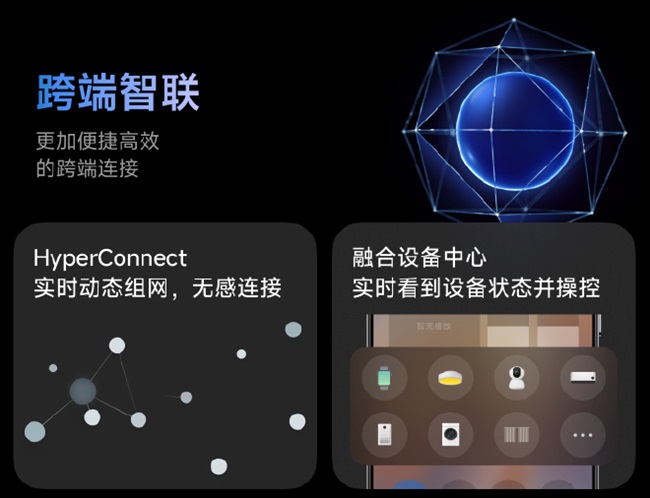
Proactive Intelligence: HyperMind AI
HyperMind is the AI center that makes devices proactive. It learns user needs and adapts devices accordingly, allowing users to enjoy smart automation without needing intricate logic comprehension.
Empowering AI: Large Foundation Models
Xiaomi HyperOS integrates large foundation models, enhancing system applications. It supports features like speech generation, image search, and AI artwork creation. Third-party apps can also benefit from this AI subsystem.
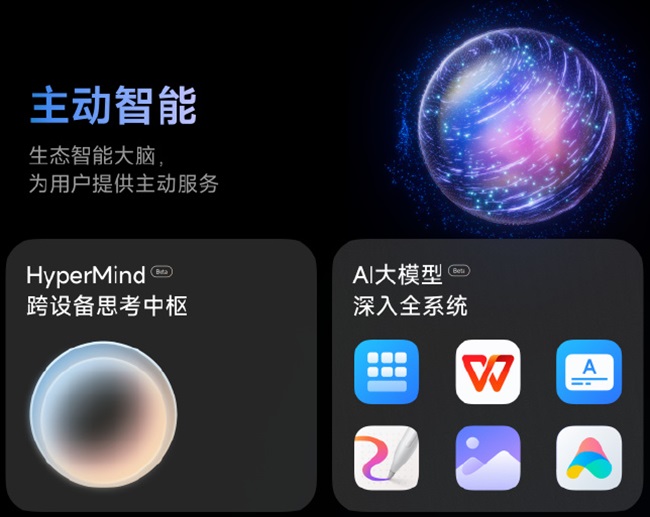
Security Priority: TEE and Encryption
Xiaomi HyperOS prioritizes user security. A dedicated hardware TEE safeguards sensitive information and extends this security to interconnected devices. It employs end-to-end encryption for data transmission.
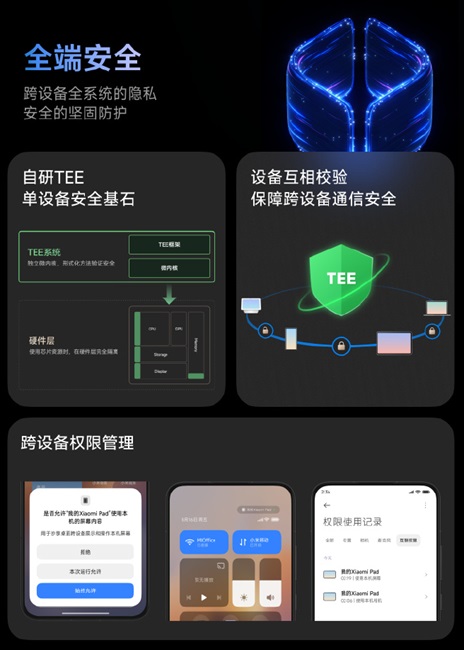
Open Sharing: Xiaomi Vela
Xiaomi HyperOS promotes an open-source ecosystem, simplifying IoT development with Xiaomi Vela, an IoT software platform. Open-sourcing Xiaomi Vela encourages innovation and real-time connectivity among IoT devices.
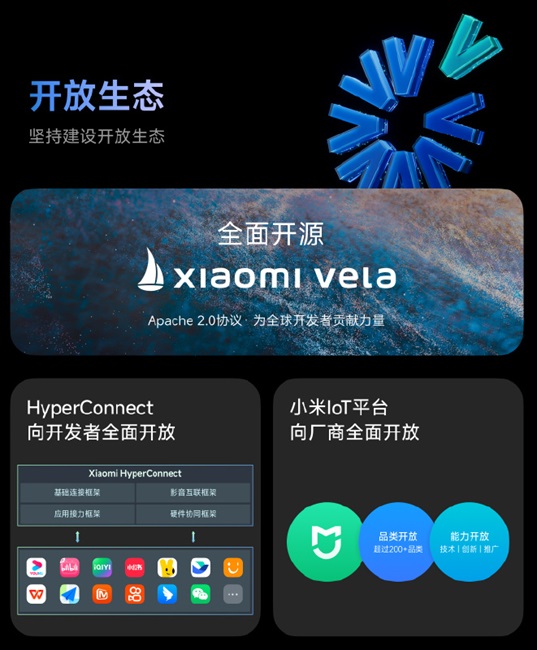
Human-Centric Ecosystem: Human x Car x Home
Xiaomi HyperOS is designed to connect personal devices, cars, and smart home products in a smart ecosystem, advancing Xiaomi’s strategic vision.
Availability: Xiaomi HyperOS Release Timeline
Domestic Version (China)
December 2023: First batch release for the following devices:
- Smartphones: Xiaomi 14 series (comes with HyperOS pre-installed) and Redmi K60 Ultra
- Tablets: Xiaomi Pad 6 Max 14″
- Smart TVs: Xiaomi TV S Pro 65, Xiaomi TV S Pro 75, and Xiaomi TV S Pro 85 (MiniLED TVs)
- Smartwatch: Xiaomi Watch S3 (pre-installed).
- Speaker: Xiaomi Sound speaker (internal beta version).
- Camera: Xiaomi Smart Camera 3 Pro.
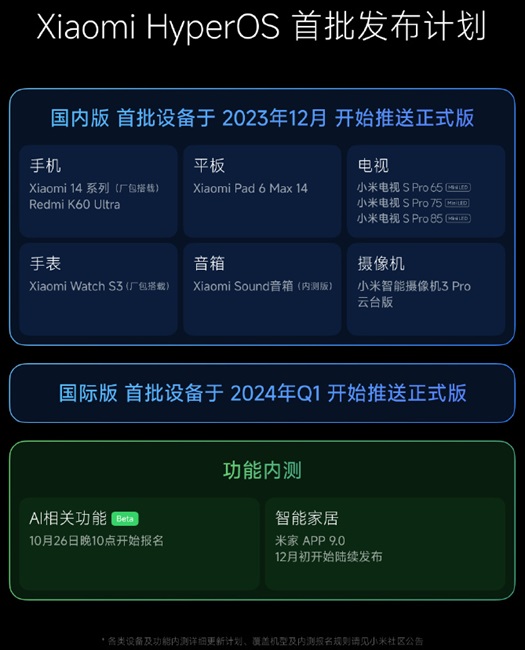
International Version
- Q1, 2024: First batch release for international devices.
Registration
- Registration for the domestic version starts at 10 pm on October 26th.
Smart Home
- Early December 2023: Mijia APP 9.0 for smart home devices will be released.


